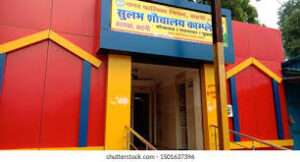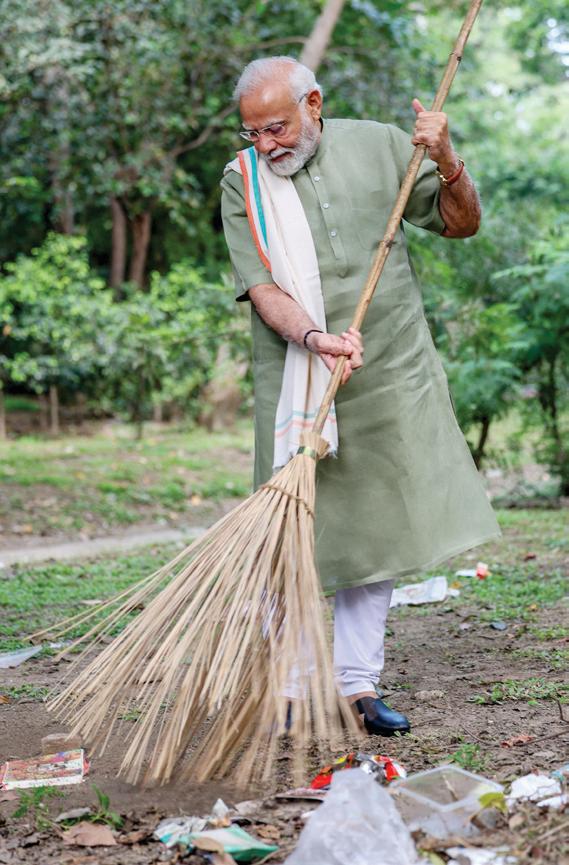Launching of the new cleanliness
campaign, but the question is what happened in the past
By Manohar Manoj
![]()

![]() Between 17 September, the birthday of Prime Minister Narendra Modi, and 2 October, the
Between 17 September, the birthday of Prime Minister Narendra Modi, and 2 October, the
birthday of Father of the Nation Mahatma Gandhi, the Government of India is going to celebrate
a new Swachhta Pakhwada under the name of Swachhotsav 2025. On the pretext of this
festival, the Government of India has drawn a blueprint of all the initiatives and achievements of
the National Sanitation Campaign of the Modi Government in the last 11 years, while on the
other hand, it has shown a new roadmap of cleanliness campaign in the country for the next five
years. In the year 2014, when the Modi government started the National Sanitation Campaign
 with great enthusiasm, it was taken as a social campaign in the country to which all the political
with great enthusiasm, it was taken as a social campaign in the country to which all the political
parties also gave their consent. In this campaign, maximum emphasis was given on
construction of toilets with government subsidy in about 40 percent of the toilet less houses in
rural areas of the country. Since then, there has been a new public consciousness regarding
public cleanliness in the country, increase in the budget allocation of the government and a kind
of competition among the VIPs of the country to do cleanliness with brooms in their hands.
Today, after almost 11 years, the Urban Development Minister and Water Resources
Minister duo of Modi Government have presented a status paper regarding public
cleanliness in the country and the new plan to prevent cleanliness, environment and all
kinds of pollution in the country in the next five years. The plan presented is giving rise
to many important questions. If we talk about spreading a serious public consciousness
and national awareness on this issue, then there does not seem to be any flaw in the
intentions of the Modi government, but when it comes to the significance of various
policies related to cleanliness and the implementation of various schemes and
programs, then echoes of many sweet, sweet and bitter experiences are heard in the
country during the last 11 years. For example, if we talk about the construction of rural toilets
between 2014 and 2019, 11 crore toilets were constructed despite all the corruption and lack of
construction quality. The government also mentioned this figure again and again. Data on
villages and districts free from open defecation was repeatedly served. But these figures for
2019 are still being repeated in 2025. There is no new government survey regarding how many
new toilets were built in the last six years and how many villages actually became ODF free. But
according to the new government data, the country has now come on the path of ODF Plus
model by achieving 100 percent freedom from open defecation i.e. ODF status. This ODF plus
model means that open defecation free villages are now also carrying out solid waste
management and liquid waste management.
ODF Plus states include Assam, Tripura, Karnataka, Sikkim and UTs like Lakshadweep,
Puducherry and Andaman where and 96 per cent of villages have gotten this status. The reality
is that in many places in rural areas, women are still going to open defecation in the evening.
The government policy here is ignoring the ground reality. Those who have houses built on their
own land, they construct toilets by taking government subsidy. But in villages, those whose
 houses are built on the roadside, are in very narrow places and those who do not have a lease
houses are built on the roadside, are in very narrow places and those who do not have a lease
of their houses, could not build toilets, even if the government figures claim. Secondly, under the
toilet construction campaign, importance was given to the construction of household toilets, but
maximum construction and maintenance of public toilets in panchayats,municipalities and small
towns did not get that much priority. If we look at it now, there is a huge shortage of public toilets
even in the major urban centres of the country. Even if they are there, they are not regularly
maintained and are in a hellish condition. In such a situation, in the country, cleaning of public
toilets through third parties or their maintenance by private voluntary organizations should be
based on a minimum prescribed charge and if a national policy is made on this, then a better
implementation regarding cleanliness would have been achieved.
It is true that in India, like in western countries, a huge fee cannot be imposed for defecation.
But if this service is started in India with some small usage amount, then a new tradition of
cleanliness would have been created in the country. Needless to say, the challenge of
improving the condition of public toilets in about 5 thousand municipal cities, about 750 districts
and about 50 big cities and metros of the country are so huge. It is important to create public
awareness, more budget allocation, policy clarity and high degree of public discipline.
The second important point of the cleanliness campaign is the first proper collection garbage
from all of households, then its dumping and then its processing. If seen in this case, the
number of mini vehicles carrying garbage in the last ten years under the new cleanliness
campaign is clearly visible along with the cleanliness song sung by folk singer Kailash Kher. In
fact, many state governments in villages have also started schemes to collect domestic waste.
Lohia cleanliness scheme in Bihar is noteworthy in this. But the biggest problem of the entire
country in this matter is its dumping. Governments are not yet able to decide how to dispose of
lakhs of tones of garbage every day in the big metros of the country. Due to lack of this, three
big mountains of garbage have been created in the capital Delhi.
There is a continuous need for research and development i.e. R&D on a large scale in the
country regarding the processing of solid waste and liquid waste. Unless we are able to do this
work on a large and effective scale, the slogan of 'Waste to Wealth' will remain just a slogan.
We often hear about building roads from plastic waste and electricity from solid waste and
making compost from tree leaves and other things in villages, but there is still a long way to go
to implement it. Our rivers are getting polluted due to liquid waste. The poor condition of
Yamuna River in Delhi is due to the dirty drains connected to it. In this matter, the Central
Government is definitely showing its resolve regarding the cleanliness scheme of Yamuna but it
is yet to be converted into reality.
Under the new National Cleanliness Campaign, the cleanliness ranking
of the cities of the country has definitely inspired their municipalities and urban development
departments to compete among themselves, but every time the same few cities Indore,
Chandigarh, Visakhapatnam, Surat come in the ranking again and again.
Close to 5000 municipal cities in the country, close to 100 of B category and close to 30 of A
category they all have challenges regarding cleanliness.
The third important point of the National Cleanliness Campaign is the encouragement and
welfare of sanitation workers. There is no uniformity and level playing field in the salary and
working conditions of sanitation workers working in both private and government in the country.
Due to lack of modern cleaning equipment, news of the accident still shakes the heart.
However, the new resolution taken by the government regarding various forms of national
cleanliness will definitely inculcate new public awareness regarding cleanliness in the country
and try to face all the imminent challenges.


